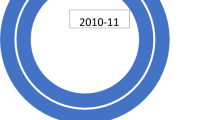Abstract
The objective of this paper is to econometrically estimate the determinants of business informality in Cameroon. The data are from the second Survey on Employment and the Informal Sector (EESI 2) carried out in 2010 on 3560 Cameroonian micro and small enterprises. From six probit models, we find that gender, age and educational level of the entrepreneur, size and level of capital of the company, access to infrastructure, the fact that the activity is in contact with the administrative bodies and administrative red tape have an influence on the formalisation of small production units in Cameroon. Whether we take into account only the sub-sample of companies that are willing to pay or already pay taxes or the sub-sample of those which are registered or willing to be registered, we show that only the educational level of the entrepreneur, the level of capital of the company, access to infrastructure and administrative red tape have a significant effect on the formalisation of businesses. These results allow us to address the most interesting economic policy issues such as the reasons for non-registration of companies apart from tax evasion.
Similar content being viewed by others
Notes
The OHADA general business law defines the undertaker as an entrepreneur with an annual turnover less than 30 million CFAF (50.400 USD) for commercial activities, 20 million CFAF (33.600 USD) for artisanal activities and 10 million CFAF (16 800 USD) for services.
The flat rate regime, the simplified regime, and the real regime.
References
Allingham, G., and A. Sandmo. 1972. Income tax evasion: A theoretical analysis. Journal of Public Economics 1 (3–4): 323–338. https://doi.org/10.1016/0047-2727(72)90010-2.
Backiny-Yetna, P. 2009. Secteur informel, fiscalité et équité: L’exemple du Cameroun. The African Statistical Journal 9: 315–376.
Bakehe, N.P. 2016. Informalité et productivité des très petites et petites entreprises au Cameroun. Innovations, Revue D’économie Et De Management De L’innovation 3 (51): 105–124.
Benhassine, N., D. Mckenzie, V. Pouliquen, and M. Santini. 2016. Can enhancing the benefits of formalisation induce informal firms to become formal? Experimental evidence from benin. World Bank Policy Research Working Paper 7900.
BIT. 2017. Étude sur la migration de l’économie informelle vers l’économie formelle : proposition de stratégie pour le Groupement Inter-Patronal du Cameroun. Bureau international du travail, Genève.
Burki, A.A., and U. Afaqi. 1996. Pakistan's informal sector: review of evidence and policy issues. Pakistan Journal of Applied Economics 12 (1): 1–30.
Dabla-Norris, E., M. Gradstein, and G. Inchauste. 2008. What causes firms to hide output? The determinant of informality. Journal of Development Economics 85 (1–2): 1–27. https://doi.org/10.1016/j.jdeveco.2006.05.007.
De Soto, H. 1989. The other path: The invisible revolution in the third world. New York: Harper and Row.
De Castro, J.O., S. Khavul, and G.D. Bruton. 2014. Shades of grey: How do informal firms navigate between macro and meso institutional environments? Strategic Entrepreneurship Journal 8: 75–94. https://doi.org/10.1002/sej.1172.
Djankov, S., E. Miguel, Y. Qian, G. Roland, and E. Zhuravskaya. 2004. Who are Russia’s entrepreneurs? Journal of the European Economic Association 3 (2–3): 1–11. https://www.jstor.org/stable/40005001.
Eguia, J.X. 2017. Discrimination and assimilation at school. Journal of Public Economics 156: 48–58. https://doi.org/10.1016/j.jpubeco.2017.08.009.
Fambeu, A.H., and G.D. Mbondo. 2020. Endogenous peer effects and level of informality: Some evidence from micro and small firms in Cameroon. Review of Social Economy. https://doi.org/10.1080/00346764.2020.1769166.
Glaeser, E.L., B. Sacerdote, and J.A. Scheinkman. 1996. Crime and social interactions. The Quarterly Journal of Economics 111 (2): 507–548. https://doi.org/10.2307/2946686.
INS. 2011. Enquête sur l’Emploi et le Secteur Informel. Rapport de synthèse. Novembre 2011.
Jackson, M.O., B.W. Rogers, and Y. Zenou. 2017. The economic consequences of social network structure. Journal of Economic Literature 55 (1): 49–95. https://doi.org/10.1257/jel.20150694.
Mcpherson, M.A., and C. Liedholm. 1996. Determinants of small and micro enterprise registration, results from surveys in Niger and Swaziland. World Development 24 (3): 481–487. https://doi.org/10.1016/0305-750X(95)00147-5.
Patacchini, E., E. Rainone, and Y. Zenou. 2017. Heterogeneous peer effects in education. Journal of Economic Behavior & Organization 134: 190–227. https://doi.org/10.1016/j.jebo.2016.10.020.
Rakotomanana, F.H. 2009. Les déterminants de la volonté de faire enregistrer son entreprise informelle à Madagascar, quelles implications sur la stratégie des administrations publiques ? STATECO 104: 75–89.
Schneider, F., and D. Enste. 2002. Shadow economies: Size, causes and consequences. Journal of Economic Literature 38 (1): 77–114. https://www.jstor.org/stable/2565360.
Steel, W.F., and D. Snodgrass. 2008. World bank region analysis on the informal economy. Raising productivity and reducing risk of household enterprises Annex 1, Diagnostic methodology framework. Washington, DC: Banque mondiale.
Williams, C.C., and A. Gurtoo. 2012. Evaluating competing theories of street entrepreneurship: Some lessons from Bangalore. India. International Entrepreneurship and Management Journal 8 (4): 391–409. https://doi.org/10.1007/s11365-012-0227-2.
Williams, C.C., and I.A. Horodnic. 2014. An institutional theory of the informal economy: Some lessons from the United Kingdom. International Journal of Social Economics 43 (7): 722–738. https://doi.org/10.1108/IJSE-12-2014-0256.
Williams, C.C., and A. Martinez. 2014. Entrepreneurship in the informal economy: A product of too much or too little state intervention? The International Journal of Entrepreneurship and Innovation 154: 227–237. https://doi.org/10.5367/ijei.2014.0162.
Williams, C.C., M. Shahid, and A. Martinez-Perez. 2016. Determinants of the level of informality of informal micro-enterprises: Some evidence from the city of Lahore, Pakistan. World Development 84: 312–325. https://doi.org/10.1016/j.worlddev.2015.09.003.
Yitzhaki, S. 1974. A Note on Income tax evasion: A theoretical Analysis. Journal of Public Economics 3 (2): 201–202.
Acknowledgements
The authors would like to thank an anonymous referee.
Author information
Authors and Affiliations
Corresponding author
Ethics declarations
Conflict of interest
The authors have no financial or proprietary interests in any material discussed in this article.
Additional information
Publisher's Note
Springer Nature remains neutral with regard to jurisdictional claims in published maps and institutional affiliations.
Rights and permissions
About this article
Cite this article
Bakehe, N.P., Mbondo, G.D. What Drives Informality of Micro and Small Cameroonian Businesses?. J. Quant. Econ. 19, 597–610 (2021). https://doi.org/10.1007/s40953-021-00239-x
Accepted:
Published:
Issue Date:
DOI: https://doi.org/10.1007/s40953-021-00239-x




